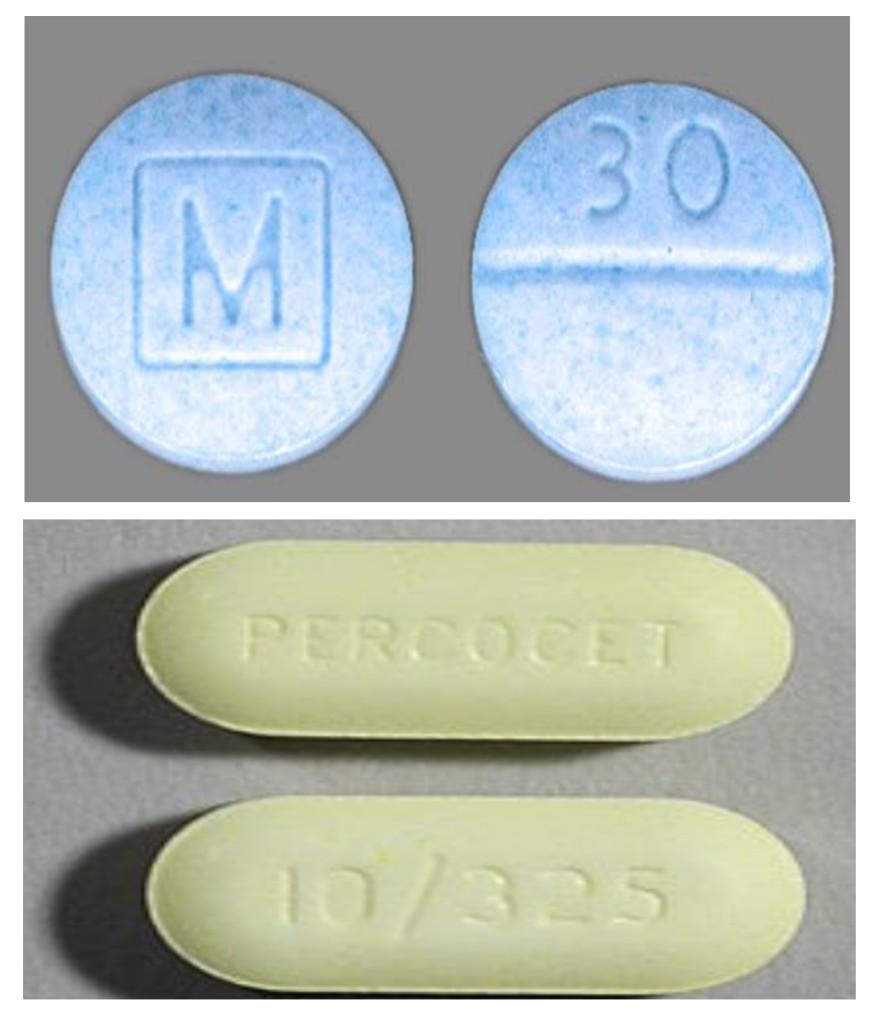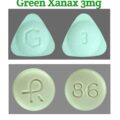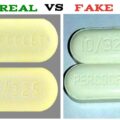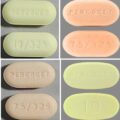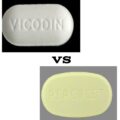What is Percocet?
Percocet is the brand name for a painkiller that combines oxycodone and acetaminophen. Oxycodone is a powerful opioid. It’s derived from the same source as morphine and some illegal drugs, including heroin.
Opioids like Percocet activate the brain’s reward center. You can become addicted to the way the drug makes you feel. But over time, the drug will stop working as well as it used to, and you’ll need to take more of the medicine to achieve the same effect.
What is M30 Pill?
The blue round pill with the imprint 30 M is a brand of Oxycodone produced by Mallinckrodt Pharmaceuticals. The genuine pill contains 30 mg Oxycodone Hydrochloride AND used in the treatment of chronic pain; pain and belongs to the drug class narcotic analgesics. FDA has not classified the drug for risk during pregnancy. Oxycodone 30 mg is classified as a Schedule 2 controlled substance under the Controlled Substance Act (CSA).
However, according to DEA reports, the most common counterfeit pill found is an illicit substitute of M30 pill. Counterfeit pills are sold on the black market, either on the street by drug dealers or on the dark web. As with other illicit drugs, agents have tied counterfeit pills back to gangs and violent crimes. The prices of counterfeit M30 pills vary, with distributors in Arizona and California, selling a single pill for $4. In Minnesota, the same pill can sell for upwards of $30, or $1 per milligram. Agents have reported seeing prices as high as $100 a pill on Native Reservations.
According to news report, law enforcement crime Lab recently tested multiple seizures of pills represented as legitimate pharmaceutical products appearing to be the drug oxycodone hydrochloride.?
All of the pills were illicit (fake) pills produced in a clandestine laboratory and not to FDA regulated standards, according to the release.
Most of the pills were stamped with the pill identifier markings “M 30” or “A 215“. Both pills are light blue in color and to the untrained eye look nearly identical to the pharmaceutically-produced products.
These additional chemical compounds are used to either assist in the binding of the substances during the pill pressing process; and/or, to enhance the power and effects of the drug.
In addition to containing fentanyl, the below listed compounds were identified from January 2017 to August 2017 by the Tucson Police Department Crime Lab in seized pills. Additional Chemical Compounds Identified in Tucson Area Fentanyl Seizures:
- Acetyl Fentanyl: the chemical structure of acetyl fentanyl is very similar to fentanyl. Studies suggest that its potency is 5 to 15 times that of heroin.
- Furanyl Fentanyl: is an opioid analgesic that is an analog of fentanyl. (More potent than heroin.)
- U-47700 “pink”: a synthetic opioid added to enhance/add to the effects of the fentanyl. (More powerful than morphine.)
- Tramadol: a synthetic opioid added to enhance/add to the effects of the fentanyl.
- para-fluoroisobutyrylfentanyl (FIBF): is an opioid analgesic that is an analog of fentanyl. Not much is known on this analog at this time.
- 4-anilino-N-phenethyl-4-piperadine (4-ANPP): is a precursor to manufacture fentanyl and related opioids.
- 5-methoxy-N,N-dimethyltryptamine (5-meO-DMT): is a psychedelic of the tryptamine class. It is found in a wide variety of plant species, and a single psychoactive toad species, the Colorado River toad.
- Cocaine: is a strong central nervous system stimulant mostly used as a recreational drug.
- Lidocaine: is a medication used to numb tissue in a specific area. It is also used to treat ventricular tachycardia and to perform nerve blocks.
- Methamphetamine: a strong central nervous system (CNS) stimulant that is mainly used as a recreational drug and less commonly as a treatment for attention deficit hyperactivity disorder and obesity.
- Diclazepam: also known as chlorodiazepam and 2′-chloro-diazepam is a benzodiazepine and functional analog of diazepam. It is not currently approved for use as a medication, but rather sold as an unscheduled substance. Efficacy and safety have not been tested in humans.
- Noramidopyrine: analgesic, antipyretic and anti-inflammatory agent. A non-steroidal anti-inflammatory drug (NSAID.) In some countries, this medicine may only be approved for veterinary use.
- Levamisole: sold under the trade name Ergamisol among others is a medication used to treat parasitic worm infections. Specifically, it is used for ascariasis and hookworm infections.
- Dipyrone (Metamizole): a non-opioid, uncontrolled analgesic banned in the US but sold OTC in Mexico and used as a cutting agent. It causes blood toxicities. (noramidopyrine is sometimes found instead of dipyrone, but they come from the same source.)
- Noscapine: like morphine, noscapine comes directly from the opium poppy; however, it has not an analgesic. It is used as a cough suppressant and is being studied for some anti-cancer properties. It is easily purchased online and used as a cutting agent.
- Meconin: a breakdown product/metabolite of noscapine.
- Papaverine: is an opium alkaloid antispasmodic drug, used primarily in the treatment of visceral spasm, vasospasm (especially those involving the intestines, heart, or brain), and occasionally in the treatment of erectile dysfunction.
- Caffeine: a central nervous system (CNS) stimulant of the methyl xanthine class. It is legal and unregulated in nearly all parts of the world.
- Acetaminophen: generic form of OTC available “Tylenol.” Commonly used as a binding or cutting agent in the manufacturing of these pills.
- Unidentified Compound: no lab standards currently available to identify unknown compounds located in seizure samples. In layman’s terms-“no clue” what it is, does or how dangerous.
Does Percocet come in 30 mg?
According to Rx.com, each tablet of Percocet, for oral administration, contains oxycodone hydrochloride and acetaminophen in the following strengths:
Oxycodone Hydrochloride, USP 2.5 mg*
Acetaminophen, USP 325 mg
*2.5 mg oxycodone HCl is equivalent to 2.2409 mg of oxycodone.
Oxycodone Hydrochloride, USP 5 mg*
Acetaminophen, USP 325 mg
*5 mg oxycodone HCl is equivalent to 4.4815 mg of oxycodone.
Oxycodone Hydrochloride, USP 7.5 mg*
Acetaminophen, USP 325 mg
*7.5 mg oxycodone HCl is equivalent to 6.7228 mg of oxycodone.
Oxycodone Hydrochloride, USP 10 mg*
Acetaminophen, USP 325 mg
*10 mg oxycodone HCl is equivalent to 8.9637 mg of oxycodone.
All strengths of PERCOCET also contain the following inactive ingredients: Colloidal silicon dioxide, croscarmellose sodium, crospovidone, microcrystalline cellulose, povidone, pregelatinized cornstarch, and stearic acid. In addition, the 2.5 mg/325 mg strength contains FD&C Red No. 40 Aluminum Lake and the 5 mg/325 mg strength contains FD&C Blue No. 1 Aluminum Lake. The 7.5 mg/325 mg strength contains FD&C Yellow No. 6 Aluminum Lake. The 10 mg/325 mg strength contains D&C Yellow No. 10 Aluminum Lake. The 7.5 mg/325 mg and 10 mg/325 mg strengths may also contain corn starch.
Oxycodone, 14-hydroxydihydrocodeinone, is a semisynthetic opioid analgesic which occurs as a white, odorless, crystalline powder having a saline, bitter taste. The molecular formula for oxycodone hydrochloride is C18H21NO4•HCl and the molecular weight 351.82. It is derived from the opium alkaloid thebaine.
Consequences of Percocet addiction
Opioids like Percocet can cause serious health complications. The drug can increase a person’s risk for choking. It can also slow a person’s breathing, which may cause them to stop breathing entirely. It’s even possible to fall into a coma or die as a result of an overdose.
A person who is addicted to Percocet may be more likely to use other illegal drugs or prescription medications. Certain combinations of medicines can be lethal. An addiction can affect work performance and personal relationships. People who use and abuse Percocet sometimes engage in risky behaviors. This may lead to motor vehicle accidents or accidents that cause bodily harm.
People who are addicted may also find themselves involved in criminal activity, especially if they decide to steal, forge a prescription, or lie to get more pills.
Treating Percocet addiction
Treatment for Percocet addiction often requires several approaches. It may seem ironic, but prescription medications may actually help a person addicted to prescription medications quit and recover from their addiction. Medications are often needed to help treat the symptoms caused by detoxification and withdrawal. This may make kicking the addiction easier.
Medications such as buprenorphine or methadone may be prescribed for Percocet withdrawal. Both have shown great success at treating and easing the symptoms caused by opioid withdrawal.
Counseling
People who are trying to overcome addiction often go for counseling. Speaking with a professional can help you discover underlying problems that may have contributed to your addiction in the first place.
Additionally, family members may want to use counseling as a way to talk with their loved one about problems, so everyone can come together to heal and move forward. Family members of those who are addicted may need counseling to help them understand how they can support their loved one through the recovery process.
Ask for help
Whether you’re trying to assist a loved one or searching for a solution yourself, you can find help. Reach out to a family member you trust or a doctor if you’re currently addicted to Percocet. Ask for help locating the resources you need, and work with your support group to find a treatment plan that works for you.
If you’re trying to help a loved one enter treatment, talk with your doctor or an addiction treatment specialist about holding an intervention. Confronting someone about their addiction can be challenging, but ultimately it’s the best thing for both you and your loved one. SEE: How to Spot Fake Percocet

